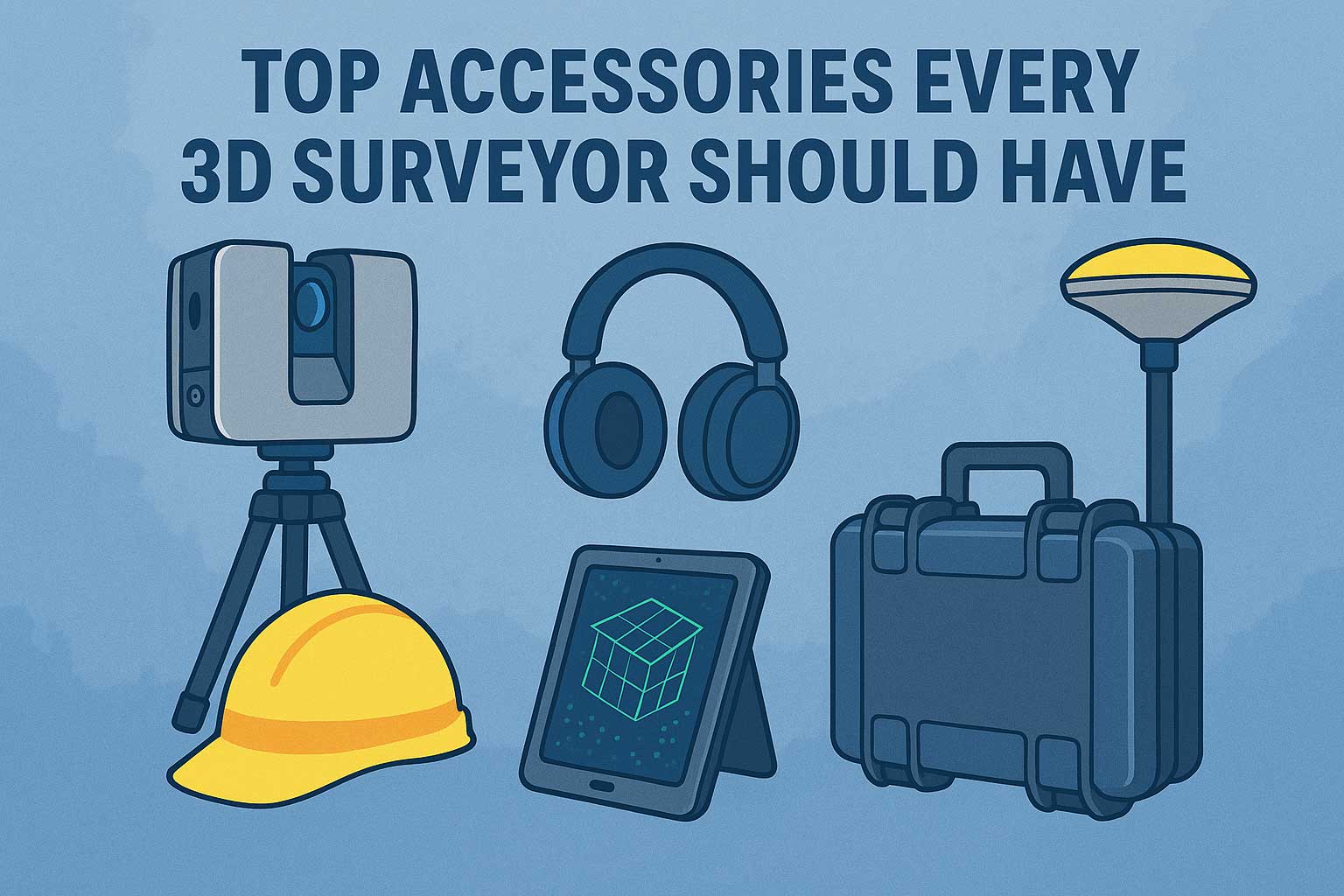Equip your 3D laser scanning workflow with the right accessories. Discover essential tools every professional surveyor should have for accuracy, safety, and efficiency.

Top Accessories Every 3D Surveyor Should Have
Investing in a 3D laser scanner is only the beginning. To maximize accuracy, protect your gear, and streamline your workflow, you’ll need the right accessories. In this article, we’ll highlight the top surveying accessories that every professional 3D scanning team should carry.
1. Tripods and Elevation Poles
A stable tripod is essential for consistent scan quality. Look for tripods with adjustable heights, quick-release clamps, and vibration-resistant builds.
Pro Tip: Carbon fiber tripods are lighter for fieldwork.
Optional: Use elevator tripods or telescopic poles for scanning ceilings or elevated targets.
2. Scan Targets and Reference Spheres
For multi-scan alignment (registration), precision scan targets and reference spheres are a must. They help software align multiple point clouds accurately — especially in large or complex sites.
- Checkerboard targets (for walls and floors)
- Magnetic or adhesive markers (for metallic surfaces)
- Retro-reflective targets (for long-range visibility)
3. Power Backup and Extra Batteries
Long scan sessions require extended power. Carry at least 2–3 backup batteries or a portable power bank compatible with your scanner. For large-scale projects, hot-swappable battery kits are highly recommended.
4. Protective Cases and Hard Shell Transport Gear
A high-end 3D scanner deserves high-end protection. Use foam-padded, waterproof, and shock-resistant hard cases to prevent damage during transport.
Bonus: Choose roller cases with custom compartments for tripods, targets, and cables.
5. Field Tablets and Control Units
Many modern scanners pair with field tablets for live viewing, scan control, and QA checks. Look for ruggedized, weatherproof devices with long battery life.
Some scanners come with branded tablets; others support Android/iOS apps.
6. Calibration Tools and Alignment Kits
To keep your scanner accurate over time, periodic calibration is essential. Use factory-approved alignment tools, targets, or calibration boards for in-house verification before shipping out for full recalibration.
7. Laser Safety Glasses
While most 3D scanners are eye-safe (Class 1), certain environments — like reflective or tight indoor spaces — may require laser protection. Laser-filtered safety glasses can prevent eye strain and meet workplace safety standards.
8. Surveyor Vest and Field Gear
For fieldwork, proper visibility and comfort matter. Invest in a hi-vis vest with pockets for tools, batteries, and a field notebook. Also consider:
- Portable sunshade for tablet use
- Anti-static gloves (when handling sensitive optics)
- Rain cover or scanner umbrella
9. External Storage Devices
Scans generate huge files. Carry fast, reliable SSDs or ruggedized USB drives for quick offloading and backups in the field. Look for:
- USB-C or Thunderbolt compatibility
- Shock-proof casing
- Minimum 1TB storage capacity
Conclusion
A successful 3D scanning project depends not only on the scanner itself but also on the accessories you bring to the field. From tripods to power backups, the right tools help you work faster, safer, and more accurately.
Ready to build your scanning kit? Explore our accessory collection or check out our gear checklist for surveyors.

Leave a Reply